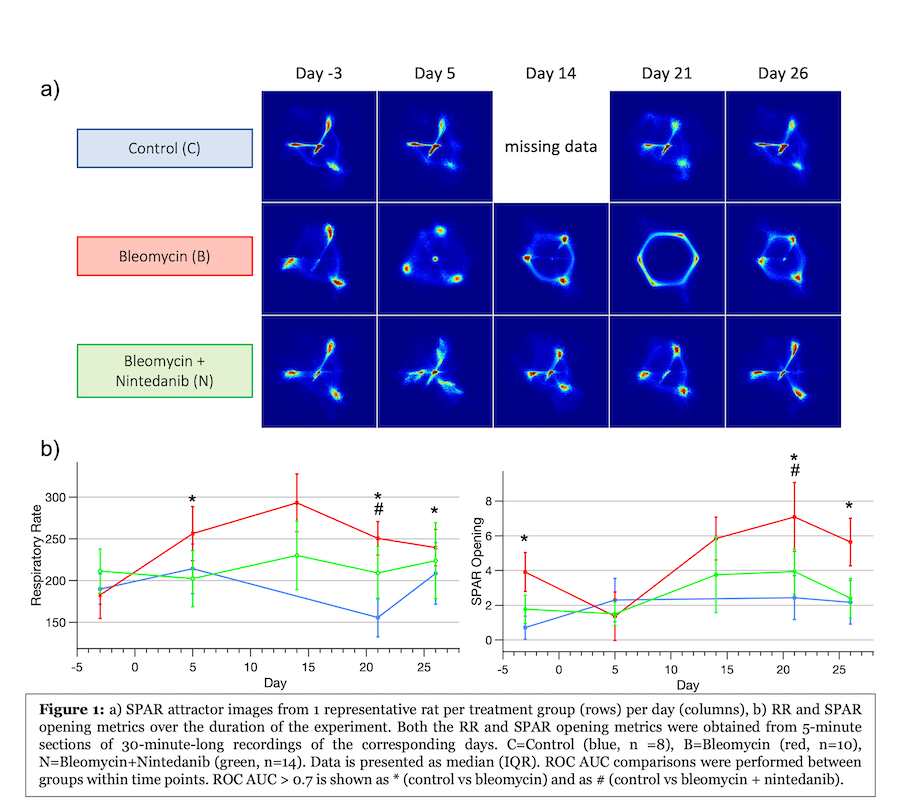Abstract
Background: Respiratory pattern analysis is currently reduced to simplified biomarkers, like respiratory rate (RR). However, respiratory waveforms are complex and generally sampled at high fidelity. Our novel mathematical method, Symmetric Projection Attractor Reconstruction (SPAR), analyses the morphology and variability of such waveforms without discarding any data.
Aims and objectives: To investigate whether SPAR can better characterise physiological changes in animal models of fibrosis.
Methods: Male Sprague Dawley adult rats were treated with bleomycin, bleomycin and nintedanib, or vehicle control. Conventional and SPAR waveform analyses were performed on respiratory recordings from days -3, 5, 14, 21 and 26.
Results: RR increased for the first 3 weeks following bleomycin treatment, returning to baseline by day 26. A similar but attenuated pattern was seen in the bleomycin group. Compared to the control animals, more open attractors were seen in the bleomycin group from day 14, which remained open on day 26. Nintedanib generally prevented the observed bleomycin-induced SPAR opening.
Conclusions: SPAR uses all available data to provide a new analytic of respiratory patterns in preclinical fibrosis adding to reductionist metrics such as RR. Thus, we propose that combining SPAR and conventional waveform metrics can improve sensitivity of detecting pathophysiological changes during preclinical development.
